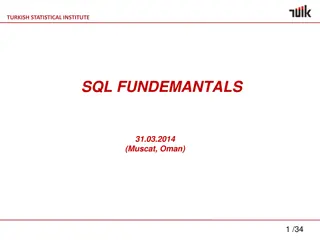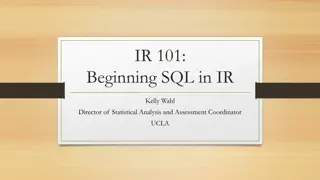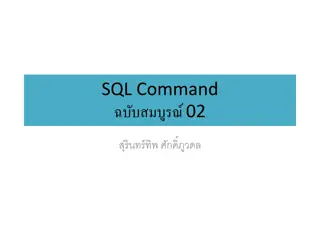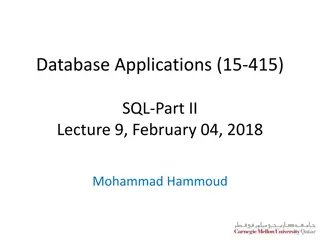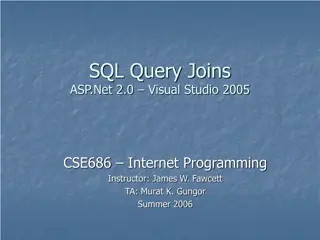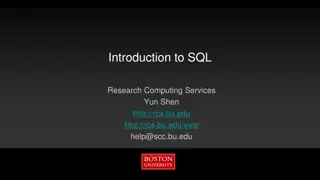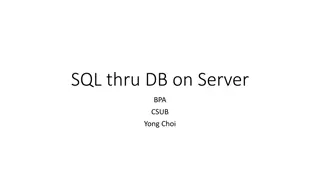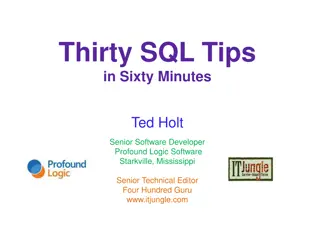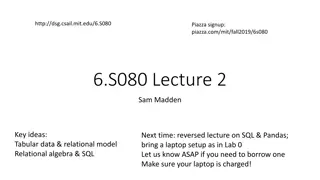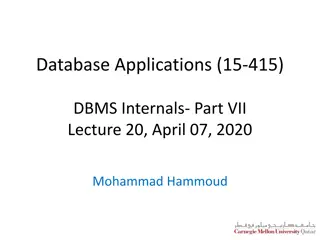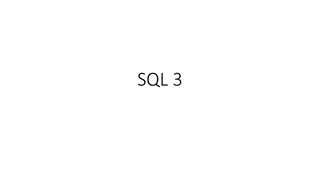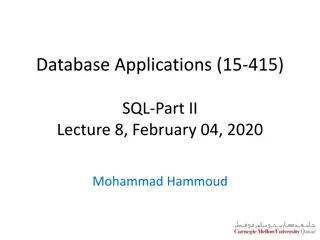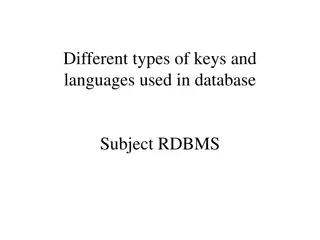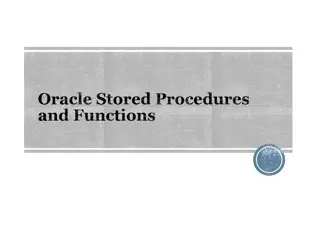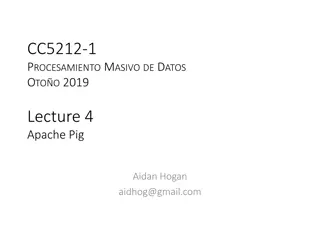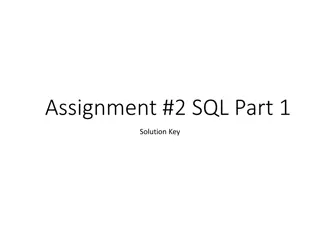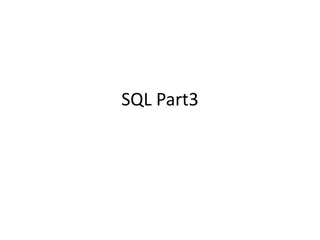Understanding SQL JOIN: A Comprehensive Guide
SQL JOIN allows you to merge data from multiple tables in a database, enabling you to access information more efficiently. This comprehensive guide covers the types of JOIN operations available in SQL, such as INNER JOIN, LEFT JOIN, RIGHT JOIN, and FULL JOIN, along with their purposes and practical applications. Learn how to effectively combine data from different tables to enhance your SQL query capabilities.
Download Presentation

Please find below an Image/Link to download the presentation.
The content on the website is provided AS IS for your information and personal use only. It may not be sold, licensed, or shared on other websites without obtaining consent from the author. Download presentation by click this link. If you encounter any issues during the download, it is possible that the publisher has removed the file from their server.
E N D
Presentation Transcript
Lesson 23 SQL JOIN Trainer: Bach Ngoc Toan TEDU Website: http://tedu.com.vn
SQL JOIN As the name shows, JOIN means to combine something. In case of SQL, JOIN means "to combine two or more tables". The SQL JOIN clause takes records from two or more tables in a database and combines it together.
WHY SQL JOIN IS USED? If you want to access more than one table through a select statement. If you want to combine two or more table then SQL JOIN statement is used .it combines rows of that tables in one table and one can retrieve the information by a SELECT statement. The joining of two or more tables is based on common field between them. SQL INNER JOIN also known as simple join is the most common type of join.
TYPE OF JOIN ANSI standard SQL defines five types of JOIN : inner join, outer join left outer join, right outer join, full outer join cross join.
DIFFERENT TYPES OF SQL JOINS (INNER) JOIN: Returns records that have matching values in both tables LEFT (OUTER) JOIN: Return all records from the left table, and the matched records from the right table RIGHT (OUTER) JOIN: Return all records from the right table, and the matched records from the left table FULL (OUTER) JOIN: Return all records when there is a match in either left or right table


